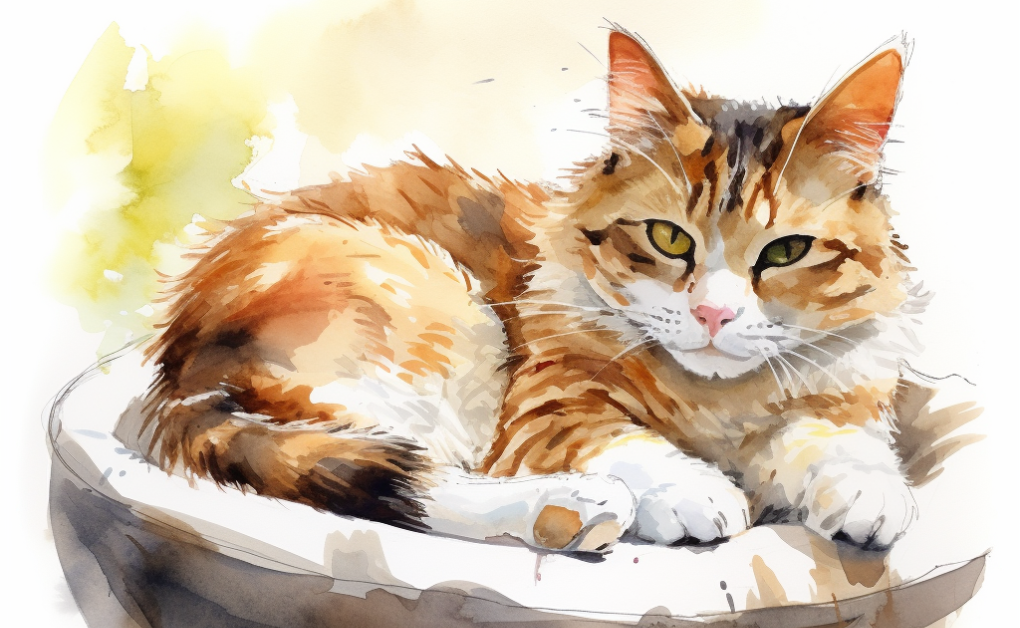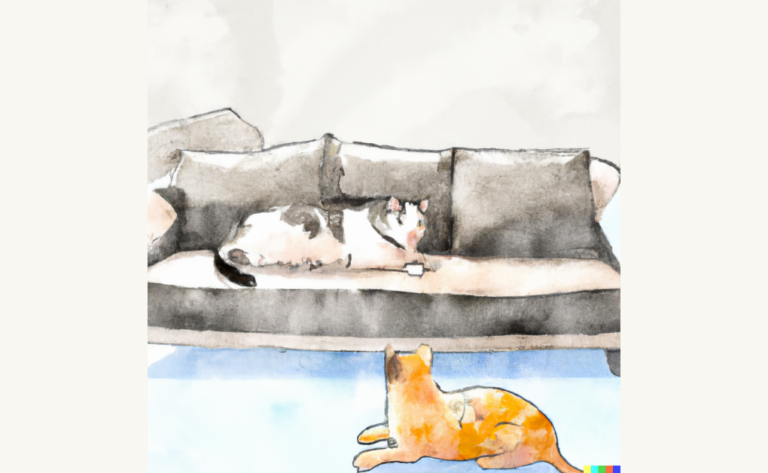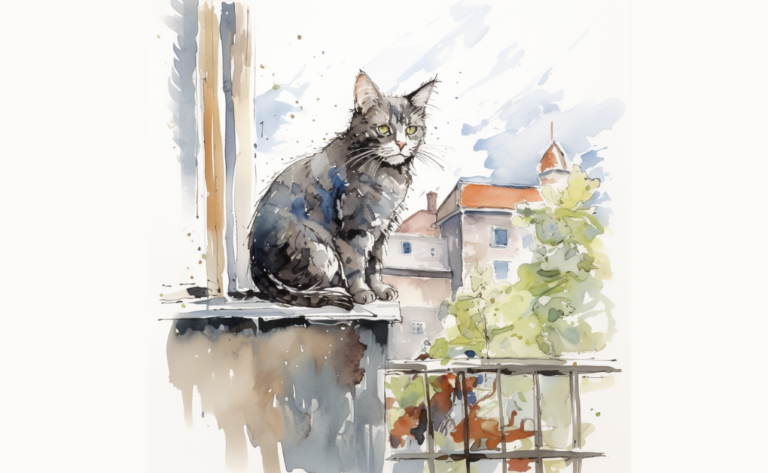How To Care For A Young Adult Cat
Introduction
When Laura opened her home to Luna, a young adult cat she had just adopted, she quickly realized that this new chapter in their lives would be full of love, purrs, and, of course, some learning curves. Although she had experience with kittens, caring for a young adult cat presented unique challenges and considerations that Laura was eager to understand.
As our beloved feline friends mature, their care needs undergo significant changes. The youthful, lively stages of kittenhood and early adulthood transition into a more peaceful phase of life. Analogous to humans, a cat’s senior years can witness observable behavior, health, and physical abilities shifts. However, this period can deeply reward pet owners, strengthening their bond with their cats.
Comprehending how to care appropriately for a senior cat is vital to ensure their twilight years are filled with comfort, health, and plentiful love. This guide will help you recognize the signs of aging in your cat, adapt to the cat’s environment in your home, adjust dietary needs, and understand the significance of regular veterinary and dental care, among other things. These factors contribute to providing the best care for your beloved feline during their golden years.
Whether you have another cat in the household, if your pet is an only cat, or regardless of the cat breed, it’s essential to ensure your cat feels comfortable and secure. If you’ve allowed your cat outside in their younger years, consider limiting their outdoor activities as they age to prevent potential issues that might cause your cat harm.
At What Age Is a Kitten Considered an Adult Cat?
Kittens are generally considered adults when they reach one year of age. However, this can vary slightly depending on the cat’s breed. Some cats, particularly large breeds like Maine Coons, may not reach their full size and maturity until they’re around two years old.
It’s important to note that while a one-year-old cat is physically an adult, it might still display kitten-like behavior. Cats typically start to calm down and act more “adult-like” between two and four years old. Therefore, even though a cat might be considered an adult at one year, pet owners should expect some playful, youthful behavior for a while longer.
Things to Consider in Feeding a Young Adult Cat
Diet Transition
As your kitten evolves into a young adult cat, it’s necessary to transition from the calorie-dense diet meant for kitten care to adult cat food. The change is required as adult cats no longer need the extra calories for growth. The switch should commence when your feline friend celebrates their first birthday. To avoid upsetting their digestive system, make this a gradual process over several days.
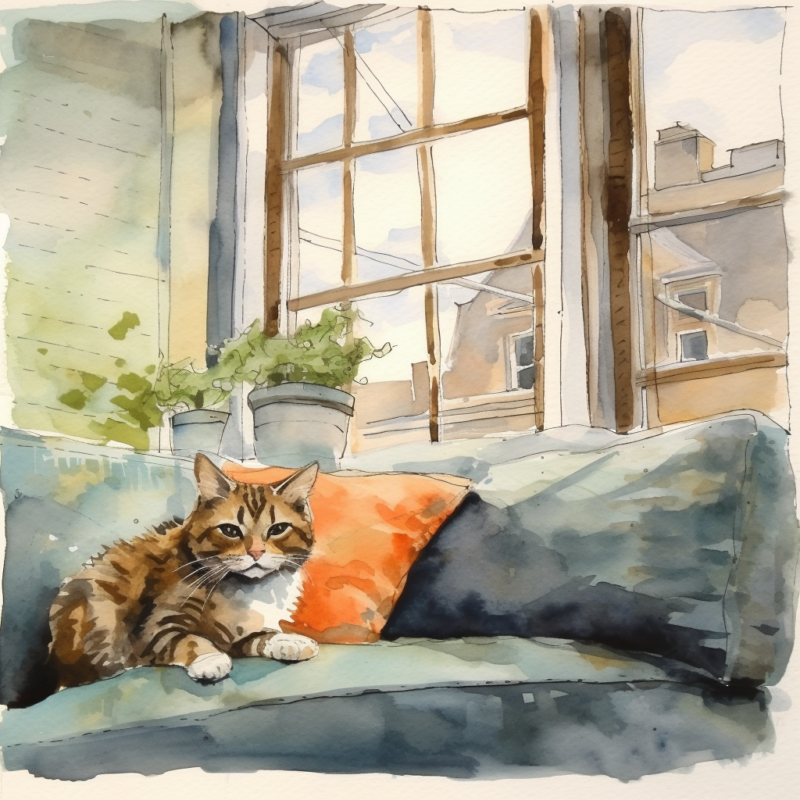
Protein Intake
Protein plays a central role in a cat’s diet. Being obligate carnivores, cats thrive on a diet abundant in animal protein. When selecting cat food, ensure an animal protein source such as chicken, beef, or fish is the primary ingredient. A diet rich in premium-quality protein assists in maintaining your cat’s muscle strength and overall well-being.
Portion Control
Overfeeding is prevalent among cats, leading to weight gain and obesity. These can further result in health complications like diabetes and joint problems. Adhering to the feeding guidelines on the cat food packaging, typically based on your cat’s weight, is essential. However, as these are broad guidelines, adjustments may be necessary based on your cat’s activity level and metabolic rate.
Regular Feeding Schedule
Cats are creatures of habit, and maintaining a regular feeding schedule benefits them. Providing meals simultaneously daily can aid digestion and mitigate the potential for overeating.
Keep Hydrated
Hydration plays a pivotal role in your cat’s health. Cats tend to have a weak instinct to drink, drinking water less frequently. Ensuring access to fresh and clean water at all times is critical. Including wet food in their diet can also boost your cat’s water intake.
Consideration of Health Issues
Your cat’s health status can greatly affect its dietary needs. Health issues like kidney disease, urinary tract problems, obesity, or allergies may necessitate a specialized diet. In such instances, consulting a veterinarian for personalized dietary advice is recommended.
Treats and Extras
While treats can be helpful for training or bonding, they should not constitute a large portion of your cat’s diet. Treats should comprise 5-10 % of the diet’s daily calorie intake. Also, not all human food is safe for cats; some can be toxic. Stick to treats designed for cats to ensure a safe and appropriate snack.
Regular Vet Check-ups
Routine veterinary appointments are crucial to your cat’s health. Regular health checks allow your vet to monitor your cat’s weight, identify potential health issues early, and provide personalized dietary advice. Each cat is unique, so a diet suitable for one cat may not be ideal for another. By keeping regular vet appointments, you can ensure your cat’s diet meets its specific needs.
As cat owners, whether dealing with a new cat, a senior cat, or an existing resident cat, understanding their dietary needs is crucial. If you’re considering cat adoption, remember that the dietary needs of kittens, young adults, and older cats will vary, as will those of indoor and outdoor cats. Always do so under vet guidance if you include raw meat in your cat’s diet. Remember that understanding your cat’s behavior and adjusting its diet throughout your cat’s life can ensure a healthy and fulfilling life for your beloved pet.
Feeding Frequency in Young Adult Cats
The feeding frequency for a young adult cat can vary depending on the cat’s age, health, and lifestyle, but generally, most cats do well with being fed twice daily.
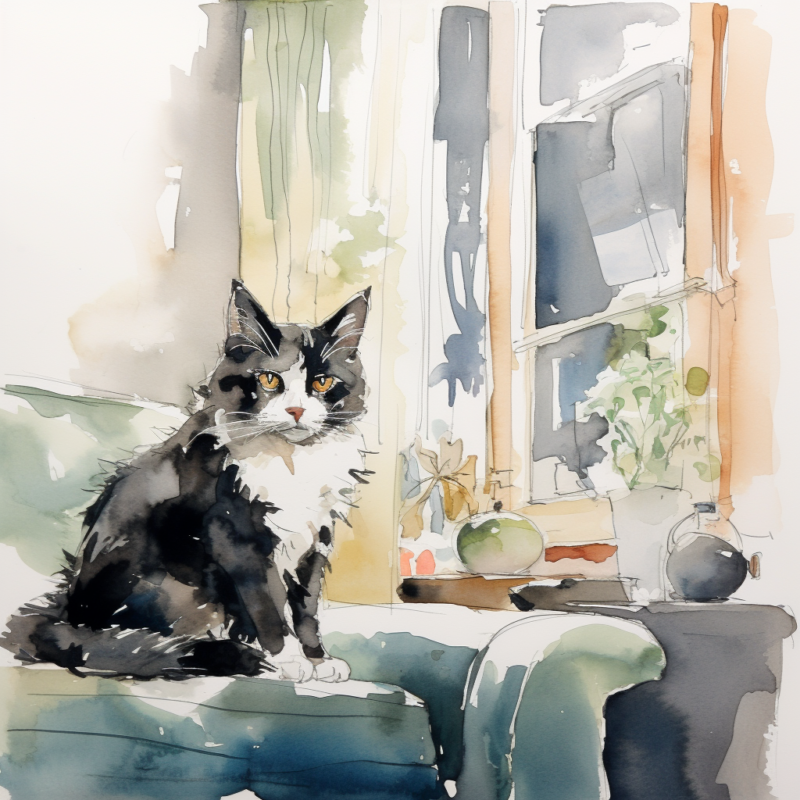
Unlike dogs, who can adapt to eating once or twice a day, cats are more natural “grazers,” with a preference for eating multiple small meals throughout the day. This stems from their hunting behavior in the wild. However, in a domestic setting, leaving food out for free feeding can lead to overeating and obesity, especially in cats who are less active or have a tendency to overeat.
Splitting your cat’s daily food allowance into two meals, one in the morning and one in the evening, can help manage hunger while controlling calorie intake. Some pet owners might prefer to offer a smaller third meal if they are home in the middle of the day or late evening.
Wet food should be consumed at once to prevent it from spoiling. If your cat eats dry food, and you want to allow for more frequent feeding without the risk of overheating, consider using a puzzle feeder. These feeders require your cat to “work” for their food by batting at or solving a puzzle, which can help mimic the experience of hunting and eating multiple small meals.
Remember that changes in appetite can be a sign of health issues, so any significant increase or decrease in your cat’s eating habits should be discussed with a vet.
Potty Training Your Young Adult Cat
House-training a young adult cat, particularly if it hasn’t been previously trained, can demand some persistence and regularity. However, using the right approach, you can quickly train your cat to utilize a litter box. Here’s a step-by-step guide:
Finding the Perfect Litter Box
Each cat will have specific preferences regarding a comfortable, tranquil, and accessible location for its litter box. Ensure the box is spacious enough for your cat to maneuver easily and has low sides to allow simple entry. The choice between a covered or open box will vary; you might need to try different options to see what your cat prefers.
Choosing the Right Cat Litter
Provide your cat with a more natural experience by opting for fine-grained, unscented litter, which most cats prefer. Experiment with different types of litter to discover your cat’s preference. Abrupt changes in litter type can be distressing for cats; hence, if a change is necessary, gradually blend the new litter with the old one to allow your cat time to adapt.
Arranging the Litter Box
Set up the litter box in a secluded, low-traffic area where your cat can have some privacy. Keep the box away from your cat’s food and water dishes, as cats prefer a clear distinction between their dining and bathroom areas. A litter box on each floor is a good idea for multi-story homes.
Introduce Your Cat to the Litter Box
Gently bring your cat to the litter box and place them inside. Scratching the litter with your fingers can demonstrate what the cat should do, but don’t force them to stay in the box. Cats naturally prefer to eliminate in a sandy or granulated substance, making it easier for growing kittens to quickly get the hang of it.
Maintain Cleanliness of the Litter Box
Cats are incredibly clean animals and may refuse to use a dirty litter box. The key to training your cat to use the litter box regularly is to scoop the box daily and replace the litter frequently, usually every week or two, depending on the type of litter. Cats rarely need a bath, but they appreciate a clean toilet!
Exercise Patience and Consistency
If your cat has an accident outside the box, avoid punishment. Instead, clean the area thoroughly to eliminate the smell, which could tempt them to use the same spot again. If your cat consistently refuses to use the litter box, it could signal a medical issue or a dislike of the box or litter. In such cases, it’s best to check with your vet.
Encourage Correct Use
Praise your cat or reward them with a small treat when they correctly use the litter box. This positive reinforcement can strengthen the association between the litter box and positive experiences.
Be Vigilant for Issues
Be aware of any shifts in your cat’s elimination patterns. Frequent accidents, changes in urination frequency or volume, or signs of discomfort while using the box could indicate a health issue and warrant a vet consultation.
Adhering to these steps can help your young adult cat develop proper litter box habits and prevent them from getting lost in learning.
Choose a Cat-Friendly Vet
Selecting the right vet for your younger cat is a crucial decision impacting their life stage progression and overall health. The ideal vet will deliver essential medical care and guide pet parents on appropriate nutrition, behavior, and comprehensive care. Here are some factors to keep in mind when seeking a vet:
Commence with a Thorough Investigation
Kickstart the process by soliciting suggestions from other cat owners, breeders, or local feline clubs. Online reviews can also be a good starting point. Search for a vet with ample experience in handling cats. After shortlisting potential vets, inspect their credentials and standing in the community.
Location is Key
Your chosen veterinary clinic should be conveniently located in your home. This is especially important during emergencies when lengthy travel times are undesirable. Additionally, check the working hours of the clinic. Clinics that offer extended evening and weekend hours could align better with your schedule.
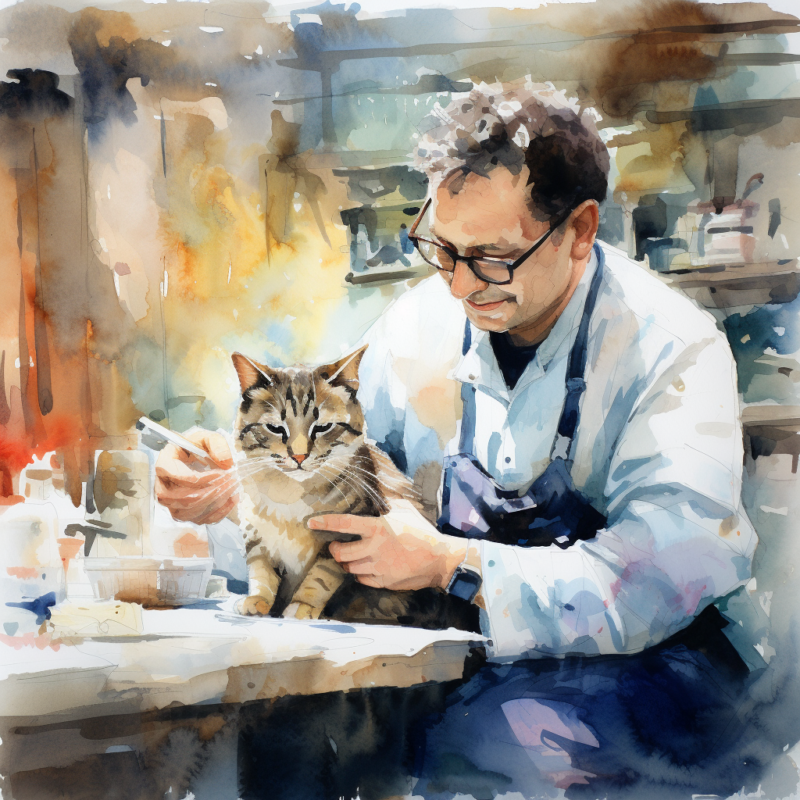
Conduct a Clinic Tour
Before making a final decision, visit the clinic to evaluate the environment. It should project cleanliness and organization. Observe how the staff interacts with pets; they should exhibit gentle handling and respect towards the animals.
Talk with the Veterinarian
Arrange a consultation with the vet to gain insight into their caregiving approach and address any concerns you may have. A competent vet should communicate effectively, be attentive to your apprehensions, and demonstrate empathy and understanding towards your young cat.
Inquire About the Services
Does the clinic offer various services, including preventative care, surgical procedures, dental care, vaccination, emergency assistance, and pain management? Do they have the latest medical equipment? Some clinics might also provide behavior consultations and nutritional advice, which can significantly enhance your cat’s health and body condition.
Scrutinize the Staff
A top-notch veterinary practice involves a holistic team, not just the vet. Receptionists, vet technicians, and other staff members should exude friendliness, professionalism, and excellent communication skills. Their role is paramount in caring for your cat and informing you about its body weight and potential health problems.
Consider the Financial Aspect
While cost shouldn’t be the sole factor dictating your choice of a vet, it’s a crucial aspect to ponder. Ensure that the vet’s fees are within your financial means. Feel free to inquire about the pricing of different services.
Provision for Emergency Care
Determine how the clinic manages emergencies during and beyond office hours. If they don’t offer round-the-clock care, they should ideally collaboration with a local emergency vet clinic.
As the adoption process of a cat matures into a bond, feel free to switch vets if you feel that your cat’s needs need to be fulfilled. The utmost priority is that you and your indoor cat feel comfortable and assured with the care provided. Always consult your veterinarian for tailored advice.
Consider Spaying or Neutering
Spaying (for female cats) and neutering (for male cats) are surgical procedures performed to sterilize your cat, preventing them from reproducing. There are several reasons to consider spaying or neutering your young adult cat:
Population Control
One of the most apparent reasons to spay or neuter your cat is to prevent unwanted kittens. Cats can start breeding as young as six months, and a female cat can have several litters yearly. This contributes to the problem of cat overpopulation, with many cats ending up homeless or in shelters.
Health Benefits
Spaying or neutering can prevent certain health problems. Spaying eliminates the risk of uterine infections and ovarian and uterine cancer in female cats, and if done before the first heat, it significantly reduces the risk of mammary cancer. Neutering removes the risk of testicular cancer in males and can reduce the risk of prostate problems.
Behavioral Benefits
Neutering can reduce or eliminate certain behaviors in male cats, such as marking territory with strong-smelling urine, roaming for mates, and exhibiting aggressive behavior. While spaying doesn’t always change behavior in female cats as dramatically, it does eliminate the heat cycles, which cause behaviors such as yowling, increased urination, and attracting male cats.
Economic Considerations
While there is a cost associated with the spay or neuter procedure, it can be less than caring for a pregnant cat and her subsequent kittens or dealing with health problems that can arise from non-sterilized cats.
When considering spaying or neutering, it’s important to consult with your vet to determine the best age to perform the procedure. Many professionals recommend sterilization at around six months of age, but it can be safely done earlier. After surgery, cats usually recover quickly, but you’ll need to monitor your cat and limit their activity while they heal.
Spaying or neutering is a significant step towards responsible pet ownership. Not only can it prevent unwanted kittens, but it can also help ensure your cat lives a long, healthy, and happy life.
Regularly Groom Your Cat
Regular grooming is beneficial for cats for a variety of reasons. It primarily helps keep your cat’s fur clean and free of mats. Cats naturally groom themselves, but regular help from their owners can ensure their coat remains in top condition. Brushing your cat’s coat aids in distributing natural oils, producing a shiny and healthy coat. It also prevents mats and tangles, which can lead to skin irritations. For long-haired breeds, daily grooming might be necessary to avoid severe matting. Grooming can also reduce the fur your cat sheds around your home.
In addition to promoting a healthy coat, regular grooming is also an opportunity to check for any changes in your cat’s skin or fur, such as lumps, bumps, parasites, or skin color or texture changes. It can help you detect signs of illness early. Grooming also provides an opportunity to clean your cat’s ears and eyes and to check their teeth and gums for any signs of dental disease such as fractured teeth, periodontal disease and stomatitis. Additionally, grooming sessions can be a bonding experience for you and your cat, strengthening your relationship. Especially for cats that enjoy being brushed, grooming can be a comforting and relaxing experience.
Frequently Asked Questions
Disclaimer: The information provided on this veterinary website is intended for general educational purposes only and should not be considered as a substitute for professional veterinary advice, diagnosis, or treatment. Always consult a licensed veterinarian for any concerns or questions regarding the health and well-being of your pet. This website does not claim to cover every possible situation or provide exhaustive knowledge on the subjects presented. The owners and contributors of this website are not responsible for any harm or loss that may result from the use or misuse of the information provided herein.

